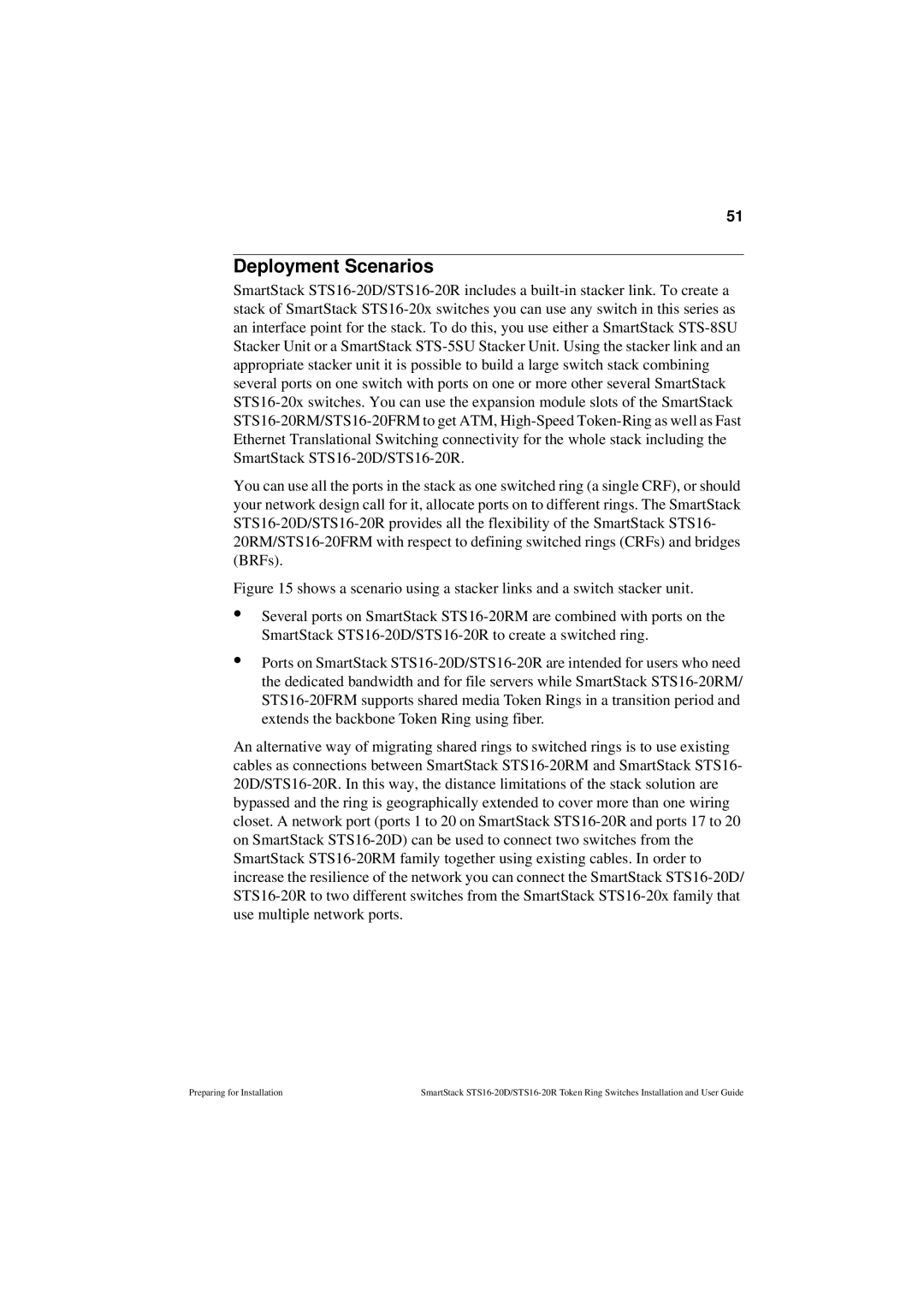51
Deployment Scenarios
SmartStack
You can use all the ports in the stack as one switched ring (a single CRF), or should your network design call for it, allocate ports on to different rings. The SmartStack
Figure 15 shows a scenario using a stacker links and a switch stacker unit.
•
•
Several ports on SmartStack STS16-20RM are combined with ports on the SmartStack STS16-20D/STS16-20R to create a switched ring.
Ports on SmartStack STS16-20D/STS16-20R are intended for users who need the dedicated bandwidth and for file servers while SmartStack STS16-20RM/ STS16-20FRM supports shared media Token Rings in a transition period and extends the backbone Token Ring using fiber.
An alternative way of migrating shared rings to switched rings is to use existing cables as connections between SmartStack STS16-20RM and SmartStack STS16- 20D/STS16-20R. In this way, the distance limitations of the stack solution are bypassed and the ring is geographically extended to cover more than one wiring closet. A network port (ports 1 to 20 on SmartStack STS16-20R and ports 17 to 20 on SmartStack STS16-20D) can be used to connect two switches from the SmartStack STS16-20RM family together using existing cables. In order to increase the resilience of the network you can connect the SmartStack STS16-20D/ STS16-20R to two different switches from the SmartStack STS16-20x family that use multiple network ports.
Preparing for Installation | SmartStack |
